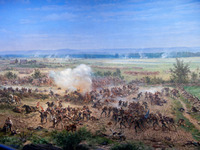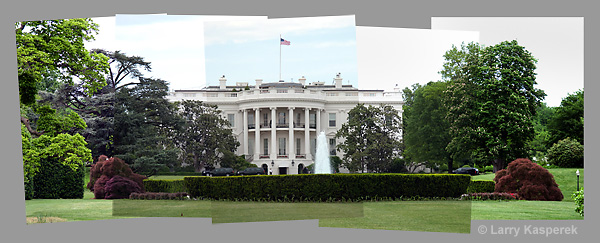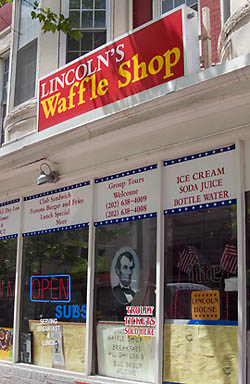This week marks the start of the Sesquicentennial of our American Civil War. Prepare to be inundated, over the next four years, with stories, films, news articles and the like. I've always been a student of the Civil War, at least back to my childhood. I'm sure I have read hundreds of books on the topic, and related areas, and have a modest library of my favorite titles and a small collection of vintage photographs.
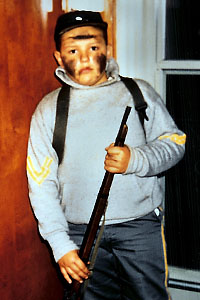 Halloween, 1962.Oddly, I can pinpoint the moment I got hooked. It was on a family vacation in the summer of 1962. We had stopped at the Manassas visitor’s center. We probably stopped so that my sister and I could stretch our legs, but I think my folks knew I had some interest. My sister and I started walking around and strayed a little bit up a hill. As we came up over the crest we were confronted with a long, solid row of Confederate soldiers advancing up the hill towards us.
Halloween, 1962.Oddly, I can pinpoint the moment I got hooked. It was on a family vacation in the summer of 1962. We had stopped at the Manassas visitor’s center. We probably stopped so that my sister and I could stretch our legs, but I think my folks knew I had some interest. My sister and I started walking around and strayed a little bit up a hill. As we came up over the crest we were confronted with a long, solid row of Confederate soldiers advancing up the hill towards us.
As it turns out, it was members of the Virginia National Guard, in full rebel uniform, practicing for the upcoming Centennial reenactment of the second battle of Manassas. I became an official buff then and there.
Flash ahead 15 or so years to where I'm working in Jackson, Mississippi and met another fellow traveler, Bob Zeller, who shared my enthusiasm for the subject. Aside from being regular visitors to Vicksburg, we found the time to "invent" a Civil War board game based on the Battle of Antietam, my friend’s favorite battle. He built the map, I made the markers and together we hashed out the rules. Over the next few years, both of us had moved to different states, so we played the game by mail. Yes, snail mail. We haven’t played in 30 years, but still have it.
I even managed to work in a visit to Charleston, S.C. and the Bentonville battlefield in N.C. on my honeymoon. I implore that if you ever meet my wife, do not bring up the subject.
I learned that both my grandfather and his brother served in 64th N.Y. Vols. My great uncle died of wounds received at the battle of Fredericksburg.
My friend, Bob, went on to found the Center for Civil War Photography, and is a leading expert on Civil War stereo views, the original 3D. Recently, he asked my help, and others, in researching and restoring photos in the Library of Congress to be used in a new documentary for television (it aired this week on the National Geographic channel). It was work, but it was also fun and a learning experience.
But I can't help but temper my enthusiasm of the Civil War’s Sesquicentennial with a little doubt and fear about how the war will be interpreted this time around. There is much opportunity, given its peculiar set of circumstances and events, for the usual over-dramatization, misinformation, shoddy research and commercialization. I hope that’s not what happens. It's important to know where we have come from as a country.
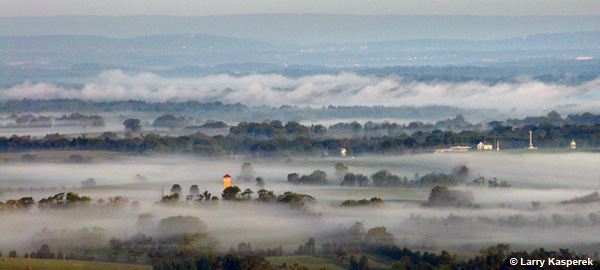 One of my favorite, recent, Civil War images. This is the Battleifield of Antietam, taken early one morning from the deck of my friends place on Red Hill.
One of my favorite, recent, Civil War images. This is the Battleifield of Antietam, taken early one morning from the deck of my friends place on Red Hill.
 But one stood out to me, a modest marker that reads “Unknown Soldier, Civil War.” I thought, what an odd place for an unknown soldiers grave. Usually, they would be interred in a National Cemetery. So I decided to ask around.
But one stood out to me, a modest marker that reads “Unknown Soldier, Civil War.” I thought, what an odd place for an unknown soldiers grave. Usually, they would be interred in a National Cemetery. So I decided to ask around.